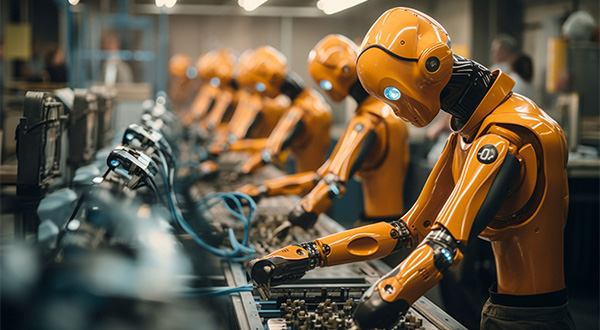What are the IoT experts saying in 2016?
The best way to define the Internet of Things (IoT) is simply ‘using the internet to connect physical objects. This includes, but is not limited to electronic devices, vehicles, and building maintenance systems’. These objects or “things” are embedded with software and sensors enabling them to interact with each other without any human input. For a more comprehensive explanation check out – What is the Internet of Things? – InfiSIM explains.
IoT is continuing to develop and help many businesses improve how they track and analyse their operations. From something as simple as automatically adjusting the office air-con to ensure the room is at optimum temperature; to the complex task of producing detailed reports for a whole fleet of vehicles. The possibilities for IoT in business really are endless.
WHAT DO THE EXPERTS SAY?
As we venture ever further into the IoT era, it only seems right to take a look at what some of the industries key influencers have to say on the matter. Earlier this year Influencer Relationship Management platform Onalytica spoke to some of IoT’s most important people; here’s what they had to say:
Dean Johnson – Head of Innovation at Hello Brandwidth
“Call it what you will – the Internet of Things, the Internet of Everything, or simply the Connected World – excitement levels are high. So too are expectations. We live in a time when a connected kettle can sit on the same network as our telephone, television, baby monitor, washing machine and every light bulb in the house. This networked utopia isn’t a new concept. 1950s visions of the future foretold just such a connected world where all these wondrous gadgets were living harmoniously together, alongside their human masters.
With great arm-waving comes great responsibility and the need to deliver on a promise. In order to achieve this, our connected world needs to be truly connected. We’re getting there and we’ll see good (and plenty of bad) ideas fall by the wayside in the rush to offer a seamless experience. In order to be ground-breaking, you need to break a few tools along the way. That top layer is by far the toughest to crack but the rewards for perseverance are high. The future’s bright, we’re just still a little disconnected.”
Simon Porter – Vice President – Commercial Sales, Europe, at IBM
“IoT has the potential to transform multiple industries so warrants the description as the next Industrial Revolution. Whilst technology’s such as cloud, analytics and security are fundamental aspects of a good IoT implementation, it’s more about the changes in business model that IoT offers many businesses to create new service models and profit streams. This is allowing many small agile businesses to create competitive advantage.”
Evan Sinar – Chief Scientist at Development Dimensions International
“As the Internet of Things meets the workplace, expectations are high and early returns are promising. For it truly take hold, however, a compelling case needs to be made to employees about how IoT will actually help them learn, grow, and advance, and how they can retain some semblance of control over what data are gathered and how it’s used.
Businesses must convince employees how their careers will benefit from all the new digital breadcrumbs being gathered: otherwise, usage will fade and cynicism will form. The talent development potential of IoT gathered data is massive, providing unprecedented opportunities to spot skill blind spots and to provide actionable information about how to close these gaps. Companies who plan for and communicate about these gains – much more than most are doing now – will increase the chances that workplace IoT will be met with employee receptivity and sustainability, rather than just short-term and tenuous compliance.”
Paul Sonnier – Digital Health Strategist, Keynote Speaker and Founder of the Digital Health Group
“As an extension of the Digital Revolution, the Internet of Things offers particular relevance to health, namely Digital Health. For example, monitoring people actively (e.g. via connected Wearable Tech devices) and passively (e.g. via stationary sensors) can provide insights into the activity and health of consumers and patients alike. This data feeds a myriad of solutions such as health and fitness coaching tools, medical diagnoses. As well as predictive analytics regarding a person’s potential for various medical conditions or events.
Privacy of consumers and patients is, of course, of paramount importance. People must be properly informed so they can opt-in, plus safeguards and security must be built in to these systems. Together, Digital Health and the Internet of Things offer a dynamic interplay to revolutionize our health and living. It’s an incredibly exciting time and I thoroughly enjoy reporting on breaking news as it occurs in my 40,000+ member Digital Health group on LinkedIn and via Twitter, at @Paul_Sonnier“
It’s clear to see that IoT is progressing rapidly. Admittedly some industries are embracing it a lot quicker than others. Nonetheless it’s present and will soon become a prominent part of our day to day business lives.
To find out more about how IoT can help your business give us a call on 0333 313 5005. You can also get in touch via our contact page.


